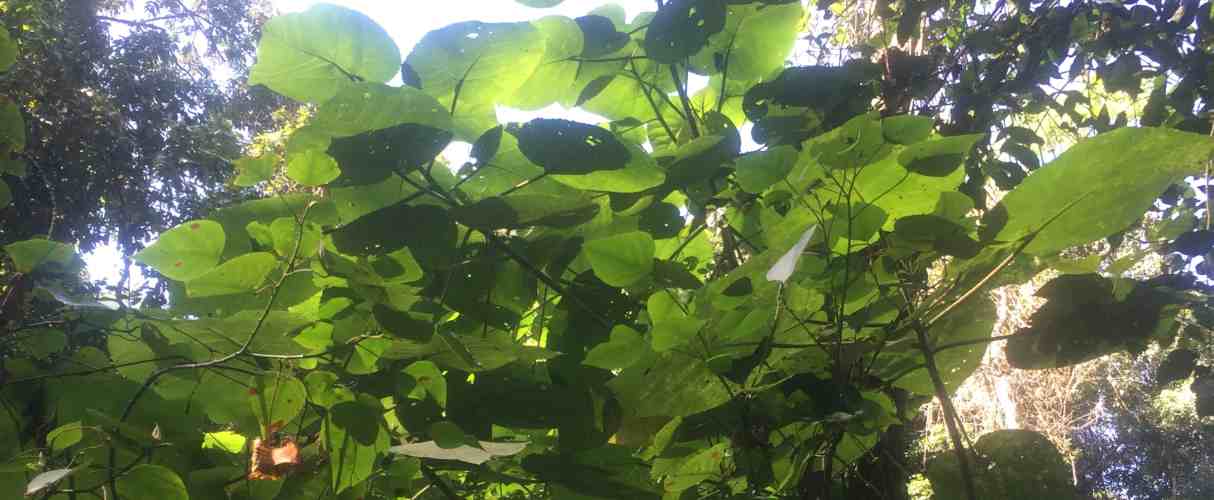The Giant Stinging Tree or ‘Gimpi Gimpi’ is one of four Dendrocnide species found within the Urticaceae family in Australia. Gimpi Gimpi is understood to be a Kabi Kabi word meaning 'devil'.
True to name, this rainforest giant can grow up to 40m tall with a smooth-tubed trunk and buttressed base.
Small pink-purple flowers become pink-purple berries from March to August. The flesh is edible but too dangerous to harvest. Many birds including the Green Catbird and Regent Bowerbird feed on the Giant Stinging Tree fruit.
Its bright-green, heart-shaped leaves have saw-toothed edges and can span up to 30cm across. Thousands of silica-tipped, hollow hairs give the leaves a soft, velvety appearance. Various insects that feed on them create a lace-like pattern in the foliage.
Skin contact with the leaves and stems of the Giant Stinging Tree can cause debilitating pain and possible hospitalisation. Even fallen leaves on the ground can cause pain. The acid-burn sensation can linger for several months.
The Giant Stinging Tree favours disturbed parts the rainforest, meaning it is more likely to grow where trees have fallen rather than in the denser, undisturbed thickets.
Learn to identify this remarkable plant and stay on the paths when visiting Mary Cairncross.
